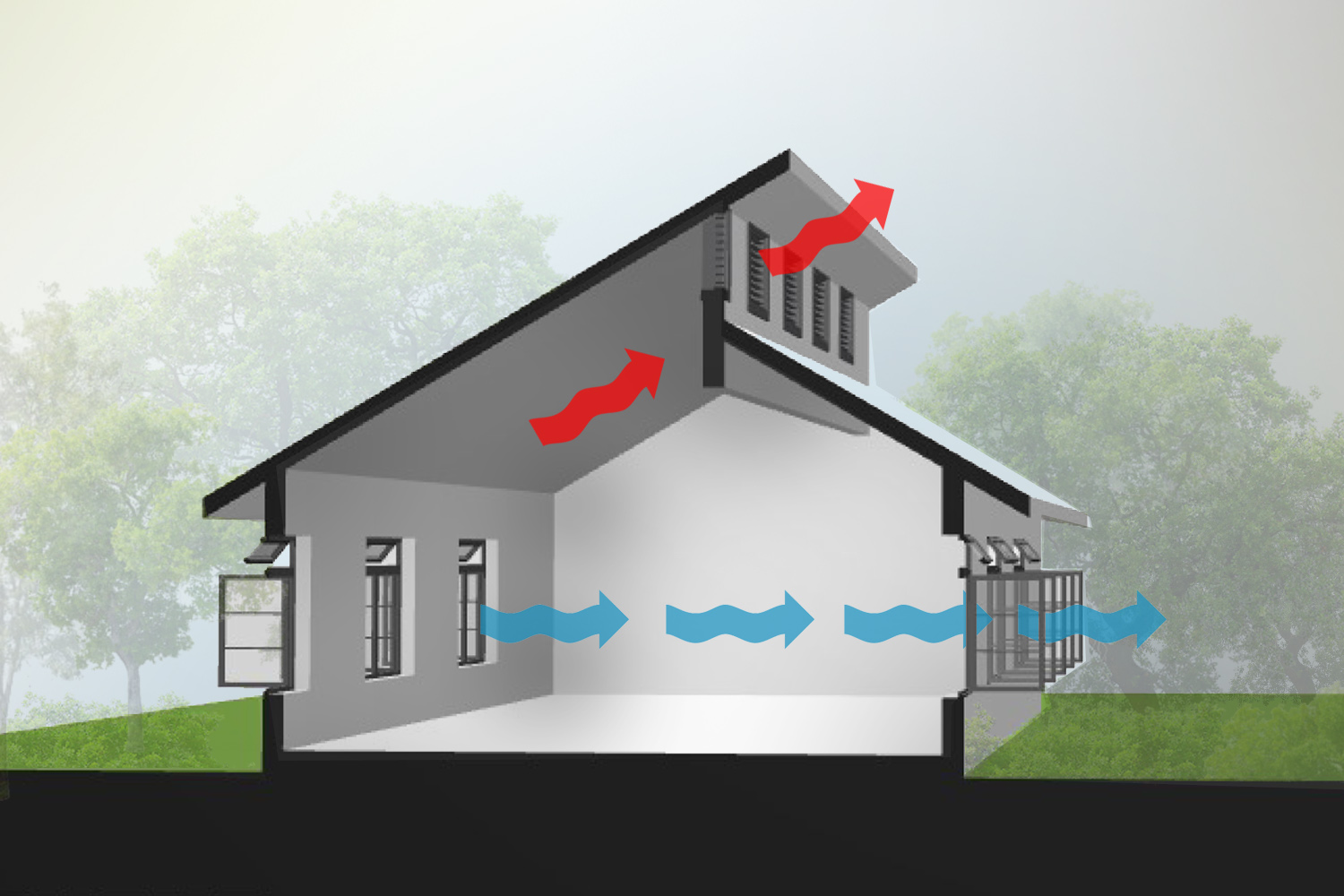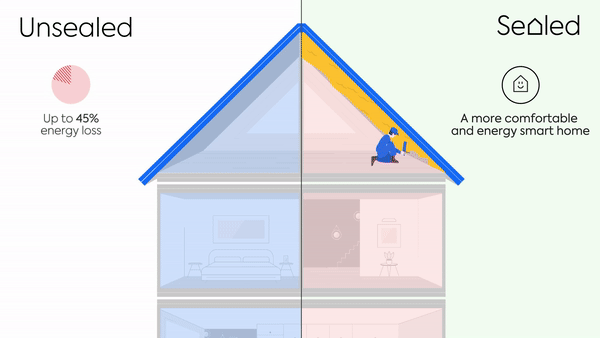Discovering Cutting-edge Solutions for Optimal Home Air Flow Systems
Home air flow plays a vital duty in keeping wellness and convenience within living rooms. With improvements in modern technology, innovative remedies are emerging to optimize these systems. Smart ventilation, energy healing ventilators, and advanced filtration are improving exactly how air top quality is handled - Home Ventilation Melbourne. The integration of these innovations increases questions regarding their performance and flexibility in different home settings. What implications do these developments hold for future living criteria?
The Value of Home Ventilation for Health And Wellness and Convenience
Often ignored, home air flow plays a crucial function in preserving both wellness and convenience within residential areas. Sufficient ventilation is vital for the blood circulation of fresh air, which helps to weaken interior pollutants such as volatile natural substances, irritants, and odors. Without correct airflow, these pollutants can collect, resulting in breathing issues and various other illness. Furthermore, effective ventilation adds to regulating moisture degrees, preventing mold and mildew development and structural damage. By guaranteeing a balanced exchange of air, homeowners can appreciate a much more positive indoor environment, enhancing overall health. Ample air flow can improve energy effectiveness by minimizing the need for too much heating or air conditioning, inevitably resulting in reduced utility costs and a more lasting living space.
Smart Air Flow Solutions: Harnessing Modern Technology for Efficiency
Smart air flow systems represent a significant advancement in home air monitoring, leveraging IoT combination for enhanced control. These systems not just advertise power effectiveness yet also use remote tracking abilities, enabling individuals to maximize their interior atmospheres effortlessly. By taking advantage of modern technology, house owners can accomplish enhanced air top quality while decreasing energy intake.
IoT Combination Advantages
Just how can IoT integration transform typical air flow systems into very efficient wise solutions? By incorporating Internet of Points (IoT) innovation, ventilation systems can accomplish real-time monitoring and control, enhancing their operational performance. Sensing units put throughout a home accumulate data on air temperature, moisture, and quality, enabling automated modifications based upon present problems. This instant responsiveness results in enhanced indoor air top quality and convenience levels. Additionally, IoT-enabled systems can connect with other clever home devices, developing a cohesive ecological community that maximizes power usage. Users can also access and handle their air flow systems from another location by means of smart devices, providing ease and raised control. Generally, IoT integration represents a substantial advancement, bringing intelligence and flexibility to conventional air flow techniques.
Energy Performance Includes
As energy performance comes to be an important emphasis in modern home design, advanced ventilation systems provide ingenious attributes that substantially minimize energy consumption. These clever ventilation systems utilize sensors to check interior air moisture, quality, and temperature level levels, immediately changing air flow to preserve ideal conditions. By using energy recovery ventilators (ERVs), they record and recycle energy from outgoing air, minimizing heating and cooling needs. Variable speed followers further boost efficiency by changing their operation based on real-time requirements, avoiding unneeded energy waste - Home Ventilation Melbourne. Furthermore, programmable timers and tenancy sensors guarantee that ventilation runs just when necessary, adding to lower utility costs. Jointly, these features stand for a significant development in creating sustainable and energy-efficient living environments
Remote Tracking Capacities
What advantages do remote surveillance capacities bring to contemporary home ventilation systems? These capabilities enable house owners to track interior air high quality and system performance in real time, enhancing general performance. By supplying data on moisture, air, and temperature pollutants, smart air flow systems allow aggressive adjustments, making sure excellent conditions. Additionally, remote monitoring helps with upkeep informs, determining potential concerns prior to they intensify, thereby reducing fixing expenses and downtime. Individuals can access system analytics through mobile applications, permitting for practical control even when far from home. This technological integration not just promotes energy efficiency yet likewise contributes to a healthier living atmosphere. Eventually, remote tracking capabilities stand for a substantial innovation in home air flow, aligning with the expanding demand for wise home modern technologies.
Power Recovery Ventilators: Maximizing Energy Savings
Power recuperation ventilators (ERVs) play a crucial function in boosting home energy efficiency via reliable heat exchange. By moving thermal power between outgoing and incoming air, these systems considerably lower total energy usage. This cutting-edge method not only preserves indoor air quality however also adds to reduce utility costs.
Efficiency of Heat Exchange
While maintaining indoor air top quality is important for health and wellness and convenience, the effectiveness of heat exchange in power recovery ventilators (ERVs) plays an important duty in making the most of power savings. The key function of an ERV is to move warm and moisture in between outgoing and inbound air streams, which maximizes interior problems while reducing energy loss. High-efficiency heat exchangers can considerably lower the lots on home heating and cooling systems by reclaiming power that would certainly or else be squandered. The efficiency of these systems is typically measured by their core temperature level exchange prices, which can differ based upon layout and materials used. By concentrating on innovative warmth exchange technologies, homeowners can boost their ventilation systems, causing boosted power efficiency and price decreases gradually.
Minimized Energy Consumption
Decreasing energy usage is an essential advantage of power healing ventilators (ERVs), as they efficiently recycle thermal power from worn down air. By moving warm between inbound and outward bound air streams, ERVs decrease the demand for extra heating or cooling, leading to substantial power savings. This process not just decreases utility expenses but likewise lessens the environmental impact linked with greater energy use. Furthermore, ERVs maintain consistent interior air high quality without endangering thermal convenience, creating a balanced living atmosphere. By integrating ERVs into home ventilation systems, homeowners can accomplish greater energy effectiveness, enabling a lasting approach to interior air administration while benefiting from lower power bills. Eventually, ERVs stand for a compelling remedy for energy-conscious consumers.
Advanced Purification Technologies for Cleaner Indoor Air
As interior air top quality ends up being increasingly identified as an essential element of health and health, advanced filtration modern technologies are arising as crucial tools for making certain cleaner settings. These modern technologies consist of high-efficiency particle air (HEPA) filters, activated carbon filters, and electrostatic precipitators, each made to successfully catch airborne contaminants, allergens, and volatile organic compounds (VOCs) HEPA filters can catch particles as small as 0.3 microns, substantially reducing irritants like dirt termites and animal dander. Activated carbon filters excel in adsorbing smells and chemical vapors, adding to a fresher indoor ambience. In addition, electrostatic precipitators make use of electric charges to eliminate particles, giving an energy-efficient option. By incorporating these advanced filtering systems, basics home owners can boost indoor air high quality and promote much healthier living rooms.
The Duty of Sensing Units in Maximizing Air Movement and Quality
How can sensors transform the monitoring of indoor air quality? Sensors play a crucial function in boosting air movement and boosting indoor atmospheres. By constantly monitoring variables such as moisture, temperature, and degrees of toxins, they give real-time information that notifies air flow systems. This info allows computerized adjustments to airflow, making certain sufficient blood circulation and reducing the accumulation of contaminants. Furthermore, advanced sensors can spot particular air quality concerns, triggering immediate feedbacks to boost convenience and health. The combination of these devices into air flow systems enables for an extra receptive and effective monitoring strategy, minimizing power intake while keeping ideal air top quality. Ultimately, sensing units act as a vital component in developing healthier indoor spaces via specific air movement policy.
Incorporating Air Flow With Smart Home Systems
While several property owners look for ease and effectiveness, incorporating ventilation systems with wise home innovation uses a cutting-edge solution to taking care of interior air quality. By linking air flow devices to wise home centers, residents can automate air high quality surveillance and control airflow based on real-time information. These systems can respond to modifications in toxin, temperature, and humidity levels, ensuring suitable interior conditions. Smart thermostats can work in tandem with air flow systems to enhance power effectiveness, decreasing costs while keeping comfort. Home owners can also from another location control their air flow setups via mobile apps, giving versatility and assurance. Inevitably, this integration not just simplifies monitoring but substantially improves the overall living environment, making it a useful enhancement to contemporary homes.
Future Patterns in Home Ventilation Solutions
Emerging technologies and increased understanding of indoor air quality are shaping the future of home air flow solutions. One significant fad is the assimilation of artificial intelligence, enabling systems to adjust air movement based upon real-time information and occupancy patterns. Furthermore, energy recovery ventilators are obtaining grip, giving efficient air read here exchange while reducing energy loss. The use of eco-friendly materials and styles is additionally on the surge, straightening with sustainability objectives. Smart sensors that keep track of toxins and humidity levels are becoming criterion, permitting property owners to preserve ideal indoor atmospheres. Scalable and modular systems are arising, supplying personalized options for different home dimensions and setups. With each other, these improvements promise to boost comfort, performance, and health in property spaces
Often Asked Inquiries
How Usually Should I Clean My Home Air Flow System?

The regularity of cleaning a home ventilation system differs based on usage and setting. Typically, it is advised to clean the system every 3 to six months to keep optimal air quality and system effectiveness.
Can Poor Air Flow Cause Mold And Mildew Growth Indoors?

What Are the Indicators of Inadequate Home Air Flow?
Indications of insufficient home ventilation consist of persistent odors, raised humidity degrees, condensation on home windows, visible mold and mildew growth, and a basic sensation of stodginess. These signs typically suggest that air blood circulation is inadequate for preserving a healthy and balanced indoor atmosphere.
Just How Can I Improve Ventilation in Older Houses?
To enhance air flow in older homes, one could take into consideration installing exhaust fans, using natural air flow via home windows, sealing gaps for better air control, and integrating air purifiers to boost interior air top quality effectively.
Are DIY Ventilation Solutions Effective and Safe?

Smart ventilation, power recovery ventilators, and progressed informative post filtering are reshaping how air top quality is handled. As power efficiency becomes a crucial focus in modern home design, advanced ventilation systems supply innovative features that greatly reduce energy consumption. By incorporating ERVs right into home air flow systems, property owners can achieve higher power effectiveness, making it possible for a sustainable technique to interior air monitoring while benefiting from lower power expenses. The combination of these devices into air flow systems permits for an extra efficient and responsive administration method, reducing energy intake while keeping optimal air top quality. While several house owners seek benefit and effectiveness, incorporating air flow systems with wise home technology supplies a cutting-edge service to handling interior air quality.